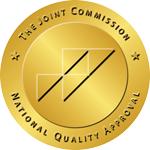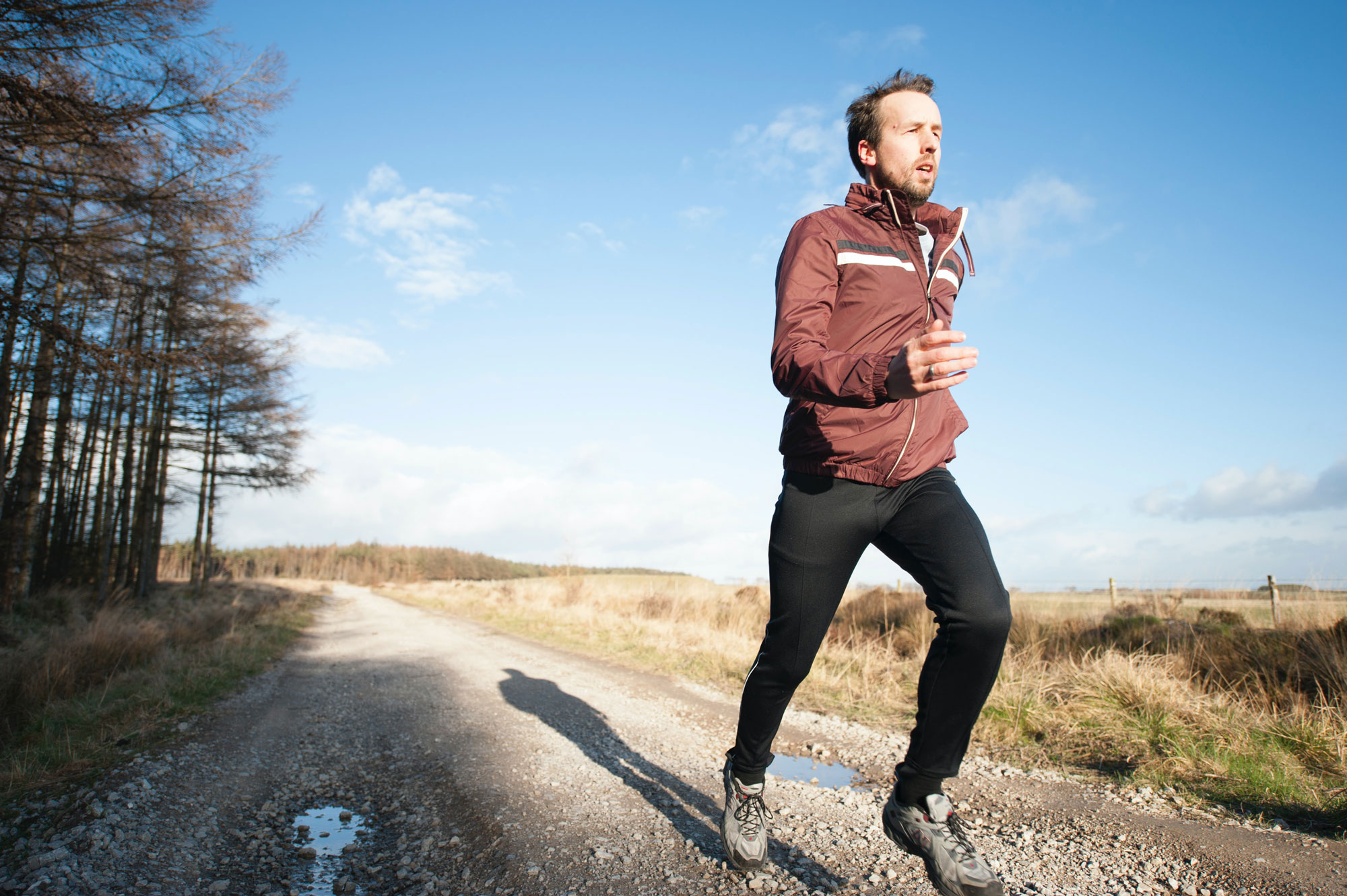What is the link between addiction recovery and exercise?
Not long ago, on their first day of treatment for alcohol use disorder (AUD), one of our clients told us a story.
They’d quit drinking once before – on their own – but relapsed. They committed to our residential program because this time they wanted help. They wanted their sobriety to last, and they realized the best way to achieve sustained sobriety was with the kind of support you can only find in a professional treatment program.
But we digress.
Here’s the story they told us about the first time they tried to quit.
At the first AA meeting they went to, 15 years ago, an old-timer was the guest speaker. He had an interesting life and an eventful recovery journey, so he was asked to talk to the group and tell his story. Our patient says never forget the first words that man said, standing up in front of the group of about 50 people at that meeting:
“Yeah, even though I’m glad I’m sober, I’m glad to be at a meeting, and I’m honored I was asked to speak here tonight, it makes me sad looking out at this group, because one thing I know is that there’s a good chance a lot of you aren’t going to stay sober.”
He went on to cite statistics about relapse rates and other scary stuff, then told his story. He was 72 years old. He’d first entered AA in his early 30’s. He stayed sober for 30 years. Then, just before he was about to retire, he relapsed. Not for one day, or one week, or one month.
For five years.
His behavior during relapse led to serious consequences. He lost his job. His wife left him. He lost the respect of his kids and burned through almost all his retirement savings. How? He took unnecessary trips. He spent money resolving a DUI. And of course, he spent way too much money on bar tabs.
Then he hit bottom and found his way back to AA. He’d just gotten his five year chip the week before he spoke at that meeting.
That’s the very definition of a cautionary tale.
Trigger Management: How to Handle the Bad Days
If you’re in recovery, these stories are important to hear.
Anyone with an alcohol use disorder (AUD) needs to remember that relapse can happen. It can happen after a week, a month, or a year. It happened to this man after 30 years. That’s why you should know ahead of time that if you’re in recovery, you’ll have bad days, just like anyone else has bad days. However, when you have bad days, you’ll want to drink. Or if you have a substance use disorder (SUD), you’ll want to use your drug of choice. And if you go back to drinking or doing drugs, the consequences may be severe.
We’re not saying you’ll spend your retirement money or end up divorced and estranged from your kids – but it can happen.
That’s why you have to plan for the bad days.
On your bad days, it will seem like triggers are everywhere.
Triggers – meaning external stimuli that elicit thought processes that can lead to relapse – are different for everyone. Trigger can be people, like family members, friends, or peers you used to drink or do drugs with. They can also be places, like bars you used to frequent, or places you used to get drugs. Triggers can also be sensory, like specific odors, or songs that evoke certain memories.
The one thing all triggers have in common is what they do to your thoughts and emotions. They can elicit patterns of thought and emotion that lead to relapse. That’s why a big part of treatment is trigger management.
Trigger management is learning how to process triggers so they don’t lead to relapse – and it’s one of the most important skills you’ll learn during recovery.
For some people, the very best trigger management skill they learn is very simple: exercise.
The Gift of Exercise
Exercise can be an important piece of the recovery puzzle. Some say it’s the most important piece of their aftercare plan and the only thing that really makes them feel better. Especially in the beginning, and especially on bad days. Since we don’t encourage people to put all their eggs in one basket, recovery-wise, we remind them that it’s one part of the entire recovery picture.
But we get it.
Exercise works.
The people for whom it works for tell us that no matter how much they want to drink or use drugs, their workout routine saves them. Without fail, they get started doing their thing – whether it’s yoga or running or lifting weights – and start to feel better in about ten minutes. The longer they work out, the better it gets. They feel the tension slipping away. They feel alive. Vital. And when it’s done, they feel better.
It works every time.
But why?
The Neurochemical Effects of Exercise for Addiction Recovery
What’s going on in my brain when you exercise? Research shows that exercise alters brain chemistry for the better.
Among other things, exercise:
Increases levels of norepinephrine, a hormone that regulates stress.
- Exercise creates a short-term stress on the body, but in response, the mind generates chemicals like norepinephrine, which help the body process stress hormones. In this way, one thing exercise does is allows the body to practice regulating stress.
Lowers levels of cortisol, a hormone that causes stress.
- Evidence shows that exercise intensity determines how much exercise decreases circulating levels of cortisol:
- Low intensity exercise has a modest but noticeable effect on cortisol reduction. Low intensity exercise is any activity performed at about 30-40% of your maximum possible level of effort.
- Moderate intensity exercise has a significant effect on cortisol reduction. Moderate intensity exercise is any activity performed at about 50-60% of your maximum possible level of effort.
- High intensity exercise has the most significant effect on cortisol reduction. High intensity exercise is any activity performed at about 60-80% of your maximum possible level of effort.
Increases levels of serotonin, a neurotransmitter which combats depression.
- Studies show that during exercise, activity increases the amount of amino acids muscles require to function. When levels of these amino acids decrease, the chemical precursor to serotonin, called tryptophan, has a better chance of crossing the blood-brain barrier, where it becomes serotonin. High levels of serotonin in the brain correlate with both a reduction in stress and a reduction in depressive mood.
- Dopamine plays a complex role in human behavior. It’s involved in coordination, movement, and motivation. It’s also known as the body’s feel good chemical because it contributes to feelings like bliss and euphoria. Decades of research show that exercise can increase levels of circulating dopamine in the brain. In addition, regular exercise over time leads to more efficient dopamine production, which contributes to higher default levels of circulation dopamine in the blood and brain.
Improves executive function in the brain.
- Research shows:
- Aerobic exercise can lead to modest improvements in executive function, i.e. how well the mind processes information and makes decisions.
- High intensity exercise like weightlifting can lead to significant improvement in executive function.
- Exercise with a mix of low intensity activity, high intensity activity, and activity that requires heightened coordination – traditional martial arts, yoga, and chi kung, for instance – leads to more significant improvements in executive function than aerobic exercise or anaerobic exercise (e.g. weightlifting) alone.
Exercise and Recovery
Everyone in recovery deals with trigger-rich days.
That’s because just about everything involved with being a living, breathing adult – family, work, friends, bills – has potential to cause stress and anxiety. When stress and anxiety reach a critical threshold they can become triggers and lead to relapse.
And that’s where exercise comes in. On those challenging, trigger-rich days, exercise is an efficient and powerful coping mechanism.
People in recovery who rely on exercise as a primary coping mechanism say that exercise:
- Chills them out and gets them steady. They describe exercise like a brain reset: it helps them let go of the stress of the day and move forward with a clean slate.
- Gives them time to get away from it all. Exercise is their time to think things over, get perspective, and solve problems on their own terms. It’s the one time of day that’s theirs and theirs alone.
- Gives them something to look forward to. People who exercise in the morning may go to sleep early just so they can get up early and have a good workout. People who exercise in the evening look forward to it all day, and often use it as a transition between work and home life.
- Helps them feel connected. Many people go to group exercise classes like spinning, aerobics, yoga, or high-intensity interval training (HIIT). They form relationships with instructors and peers based on a shared activity that’s not drinking or doing drugs. This has many positive ramifications: more sober friends increases their chances of staying sober, as does learning to have fun and spend free time in a sober-friendly, healthy environment.
- Helps them feel better. Always. We say this above, and repeat it here because that’s the one thing everyone comes back to. Exercise makes them feel better in the moment. It may be hard to get started on some days, but before long, the resistance fades and the benefits appear: improved mood, improved self-esteem, and reduced stress. Again, the people that love to exercise report that it’s hard to find anything that works as well, as quickly, and as consistently as their daily workout.
Don’t just take it from them, though.
The research we cite above shows that exercise has a quantifiable neurochemical effect on the brain. It reduces stress and improves overall brain function. That’s what makes it an ideal sober-friendly activity, and a tool which everyone in recovery should have in their toolbox.
That brings us back to the anecdote we shared at the beginning of this article – the one shared by a new patient of ours about his first encounter and an AA meeting. We wonder: if the old-timer who spoke at that meeting had exercise in his life, perhaps he wouldn’t have had his devastating five-year slip. Maybe he could have avoided all that pain and difficulty, simply by adding exercise to his daily routine. And maybe, just maybe, if everyone in recovery adds exercise – a little bit every day – to their recovery/sobriety/aftercare plan, they may be able to reduce their chance of relapse and increase their chance at achieving long-term sobriety.
If you’re in recovery, we think you should give exercise a shot: at best, you’ll find a rock-solid, top-line activity. And at worst, you’ll get in shape.
Either way, that’s a win-win.
If you need help in the recovery process, The Ridge offers a comprehensive detox program that includes an inpatient rehab facility in Cincinnati, along with other treatments and therapies. You can contact today to learn more about it.


